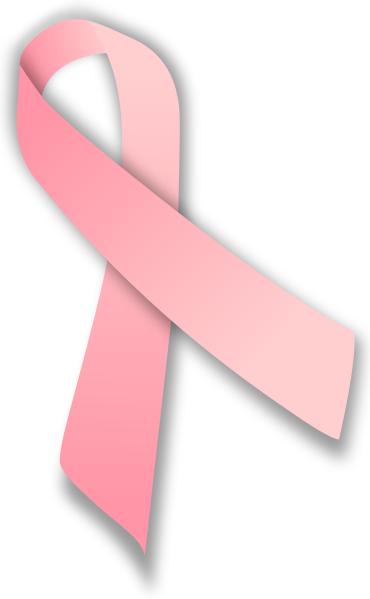
In honor of National Breast Cancer Awareness Month, this week's blog is devoted entirely to giving you information, facts, and what you can do to help increase the awareness of Breast Cancer and the importance of early detection.
"October marks the 23rd year of National Breast Cancer Awareness Month. Since the program began in 1985, mammography rates have more than doubled for women age 50 and older.
This is an exciting progress, but there are still women who do not take advantage of early detection at all and others who do not get screening mammograms and clinical breast exams at regular intervals.
-Women age 65 and older are less likely to get mammograms than younger women (55 percent vs. 65 percent for women age 40-49), even though breast cancer risk increases with age.
-Hispanic women have fewer mammograms (63 percent) than Caucasian women (74 percent) and African American women (76 percent).
-Women below poverty level are less likely than women at higher income to have had a mammogram within the past two years (44 percent vs. 65 percent, respectively).
-Mammography use increased between 1989 and 1997 for all groups except American Indians and Alaska Natives.
-Under or uninsured women are less likely to have yearly mammograms or clinical breast exams.
If all women age 40 and older took advantage of early detection methods -- mammography plus clinical breast exam -- breast cancer death rates would drop much further, up to 30 percent. The key to mammography screening is that it be done routinely -- once is not enough.
Just a few myths about breast cancer:
The Myth:
Finding a lump in your breast means you have breast cancer.
The Truth:
Eight out of ten lumps are benign, or not cancerous. If you discover a persistent lump in your breast or any changes in breast tissue, it is very important that you see a physician immediately. Sometimes women stay away from medical care because they fear what they might find. Take charge of your own health with monthly self-exams, regular visits to the doctor, and regularly scheduled mammograms.
The Myth:
Men do not get breast cancer.
The Truth:
Quite the contrary. This year it is estimated that approximately 1,700 men will be diagnosed with breast cancer and 450 will die. While this percentage is still small, men should also give themselves monthly exams and note any changes to their physicians.
The Myth:
A mammogram can cause breast cancer to spread.
The Truth:
An x-ray of the breast, called a mammogram, cannot cause cancer to spread. Nor can the pressure put on the breast from the mammogram. Do not let tales of other people's experiences keep you from having a mammogram. Base your decision on your physician's recommendation and be sure to discuss any questions or concerns with your doctor.
The Myth:
Having a family history of breast cancer means you will get breast cancer.
The Truth:
While women who have a family history of breast cancer are in a higher risk group, most women who have breast cancer have no family history. If you have a mother, daughter, sister, or grandmother who had breast cancer, you should have a mammogram five years before the age of their diagnosis.
The Myth:
Breast cancer is a communicable disease.
The Truth:
You cannot catch breast cancer or transfer it to someone else's body. Breast cancer is the result of uncontrolled cell growth in your own body.
The Myth:
Knowing you have changes in the BRCA1 or BRCA2 gene means you can prevent breast cancer.
The Truth:
Five percent to ten percent of women who have breast cancer are thought to carry the mutant BRCA1 or BRCA2 gene. Alterations in these genes for men and women can predispose them to breast cancer. If you are a carrier of the genes, your physician should monitor you closely. Carriers of the genes have a lifetime risk of developing breast cancer.
*Info. provided by The National Breast Cancer Foundation*
Warning Signs of Breast Cancer
Due to the increased use of mammography, most women are diagnosed at very early stages of breast cancer before symptoms appear. However, not every breast cancer is detected through mammography. The most common symptoms of breast cancer are a change in the look or feel of the breast, a change in the look or feel of the nipple and nipple discharge. These are described below:A change in the look or feel of the breast.
- A change in the size or shape of the breast.
- A lump or thickening in the breast, the area surrounding the breast or the underarm.
- A warm sensation in the breast.
A change in the look or feel of the nipple.
- A nipple turned inward or sunken into the breast.
- The shape of the nipple becomes irregular.
- A rash on the nipple or areola.
- Nipple tenderness, increased sensitivity or pain.
Nipple discharge.
- Blood or fluid other than breast milk secreted from the nipple.
A change in the look or feel of the skin on the breast, nipple or areola.
- Dimpling of the skin on the breast (appears like the skin on an orange).
- The appearance of irritated, red, scaly, or swollen skin on the breast, nipple, or areola.
Breast pain.
- Although breast pain is usually associated with benign breast disease rather than breast cancer, it can be a symptom of either condition.
What YOU can do to help...
There are so many ways to help (which I will list some below) but the MOST important thing you can do to help is to encourage every special woman in your life (that includes YOURSELF, ladies!!) to get a regular breast exam and mammogram! There is nothing more important than early detection!
Other ways you can help...
Donate:
nationalbreastcancer.org
komen.org
1 "Click" a day:
The Breast Cancer Site provides a feel-good way to help promote awareness of breast cancer and provide free mammograms for women in need every day — through easy and quick online activities.
With a simple, daily click of the pink "Click Here to Give - it's FREE" button at The Breast Cancer Site, visitors help to provide free mammograms for women in need. Visitors pay nothing. Mammograms are provided by our charitable partners.
Please remember to click every day to fund free mammograms and give hope to women in need. Every click counts in the battle to prevent breast cancer.
Purchase:
The Breast Cancer Site Store
The Pink Ribbon Store
Walk:
The Avon Walk for Breast Cancer











No comments:
Post a Comment